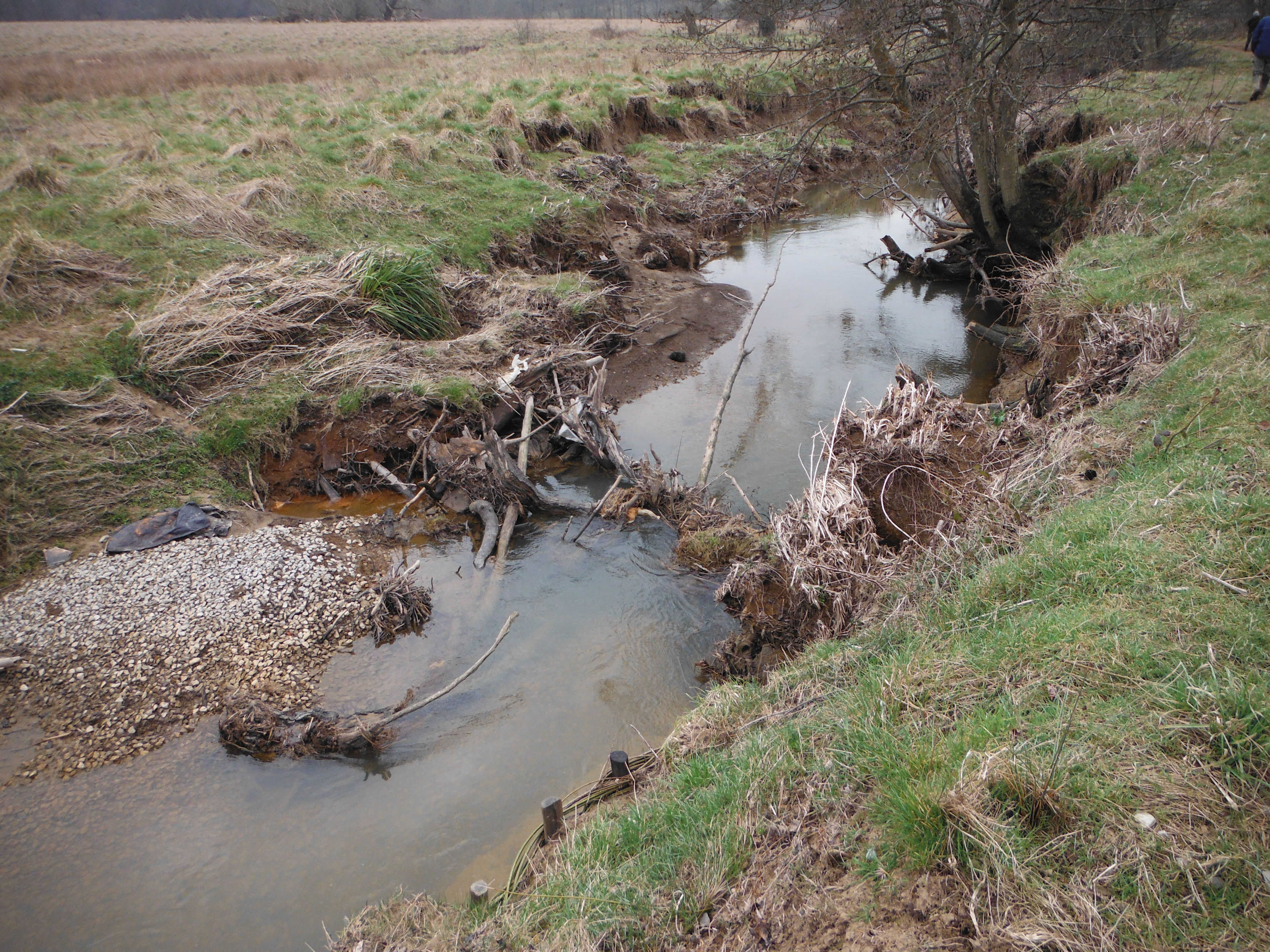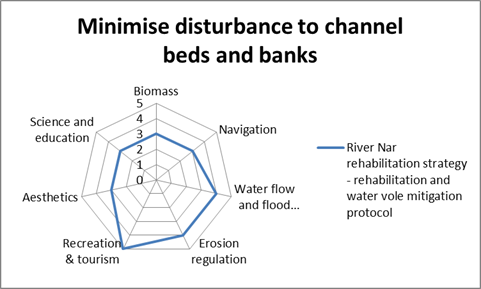Watercourses frequently support temporary habitats at the river margins and on the river bed, including fallen trees and branches, overhanging branches, emergent vegetation and unconsolidated sediments. These habitats can be very important ecologically, directly supporting a wide range of plants, fish and aquatic invertebrates and providing valuable refuges for others.
 These habitats are vulnerable to alteration or removal by many traditional maintenance practices (vegetation cutting, dredging etc.). The aim of these activities is therefore to ensure the temporary bed and bank habitats are not affected by maintenance activities more than is absolutely necessary. If these habitats do not affect the standard of flood protection required for a watercourse, they should be retained. If it is necessary to manage them, this should be done in a manner which retains as much of the habitat as possible and prevents any lasting ecological damage.
These habitats are vulnerable to alteration or removal by many traditional maintenance practices (vegetation cutting, dredging etc.). The aim of these activities is therefore to ensure the temporary bed and bank habitats are not affected by maintenance activities more than is absolutely necessary. If these habitats do not affect the standard of flood protection required for a watercourse, they should be retained. If it is necessary to manage them, this should be done in a manner which retains as much of the habitat as possible and prevents any lasting ecological damage.
Techniques
There are a range of techniques that can be used to implement this environmental improvement, depending upon the type and maintenance requirements of the water body in which it is going to be applied:
- Retain marginal habitats (including fallen trees and branches) unless they compromise flow conveyance
- Use sensitive vegetation management techniques which do not impact upon marginal habitats. These could include hand-picking or selective cutting of in-channel and bankside vegetation, coppicing or pollarding trees instead of felling them, only cutting the centre of the channel, and limiting cutting to specific areas where there is a flow conveyance issue
- Use boat-mounted vegetation cutting equipment to allow work to be undertaken in the main channel without disturbing the margins and banks
Benefits
Maintenance activities which minimise the disturbance to temporary bed and marginal habitats can deliver a wide range of benefits, including:
- Direct ecosystem benefits associated with the retention of important temporary habitats and the maintenance of biodiversity
- Natural erosion protection
- Maintenance of natural sediment processes, by encouraging the temporary accumulation of sediment in the channel margins
- Aesthetic improvements to the watercourse, by providing a more natural look
- Benefits for any commercial fisheries in the watercourse, by providing natural habitats for fish and their prey
Case Study Benefits
This diagram displays benefits scores (using a high-level ecosystem service assessment methodology) associated with the technique used in the case study. More details on the methodology can be found here.